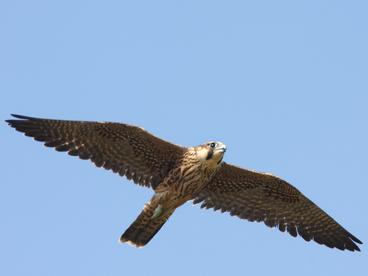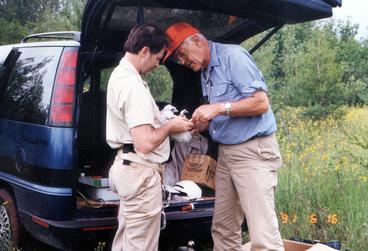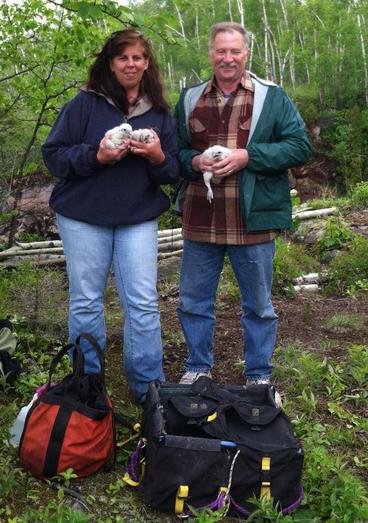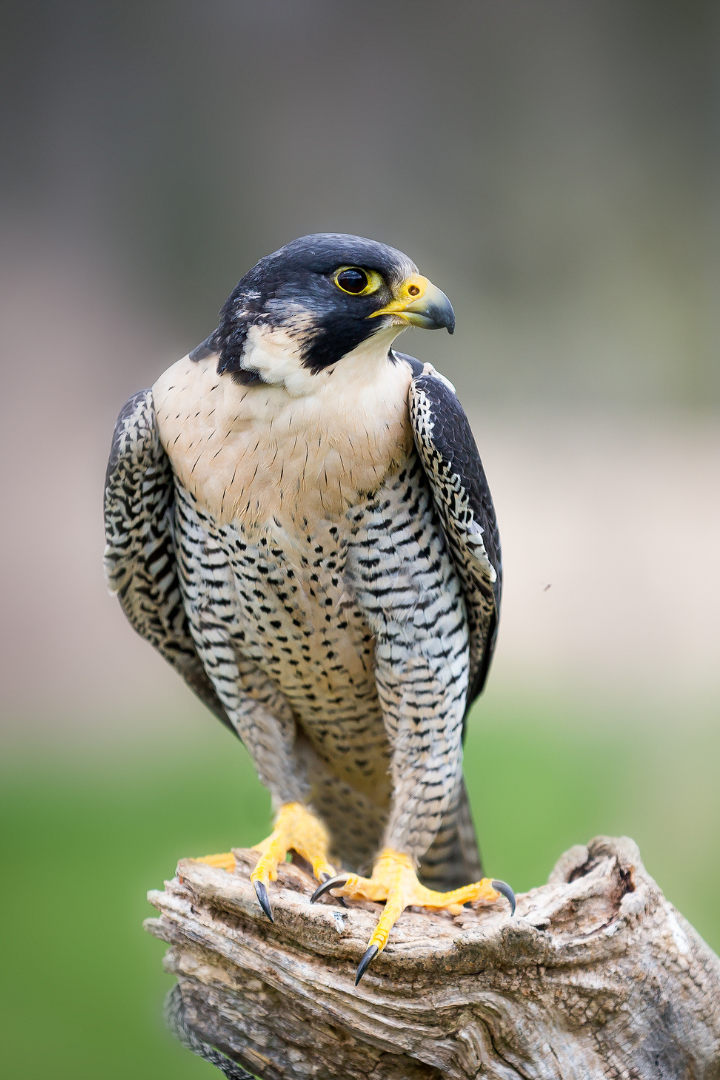
Today, there are some 200 nesting pairs of peregrine falcons in the Midwest pumping out more than 350 young peregrines each year. But it wasn't always this way. The North American population of peregrines was eliminated from most of the U.S. and Canada following a post-WWII introduction of the chemical Dichlorodiphenyltrichloroethane (DDT) into the environment to “control” insects for agriculture. The last peregrine pair attempted to nest without success in Minnesota around 1965 and DDT was fingered as the culprit.
DDT was banned by the Environmental Protection Agency in 1972 due to its harmful impact on agricultural practices, forests, and human health. Several peregrine breeding projects throughout the U.S. and Canada were soon formed. Bud Tordoff, ornithologist and then director of the Bell Museum, and myself, one of The Raptor Center’s (TRC) co-founders and first executive director, were keen to see the peregrine restored to its rich habitat in the Midwest.

Tordoff was well associated with various supporters of conservation work in the region, including The Nature Conservancy and a cohort of supporters of the Bell Museum. Additionally, the Minnesota Department of Natural Resources nongame program was established under the aegis of Carrol Henderson in 1981. A Midwest consortium was formed that led to the establishment of a release site at Weaver Dunes, south of Kellogg, Minn. In the spring of 1985, the first five young captive bred peregrines were brought to Minnesota for release.

From that humble beginning, over the next 16 years, close to a thousand young peregrines were released to the Lake Superior North Shore and metropolitan areas including Minneapolis, Minn.; Grand Rapids, Mich.; Madison, Wis.; Indianapolis, Ind.; Columbus, Ohio; Des Moines and Cedar Rapids, Iowa; and Louisville, Ky.; The population grew to the point where it exceeded the historical population by a factor of four. Owing to the success of this effort in the Midwest and others elsewhere in the country, the peregrine falcon was removed from the list of endangered species in 1999.
TRC played a central role in the entire recovery effort throughout the Midwest in coordinating the acquisition and distribution of peregrines, caring for young peregrines in-house until they were at the appropriate age for release, coordinating media coverage, providing medical care for peregrines injured during the acclimation process, and coordinating the banding of young peregrines.
Today, the coordination of peregrine monitoring and yearly banding and record keeping is conducted by the Midwest Peregrine Society, an affiliate 501c3 of TRC, of which I am president and CEO. More information about peregrines as well as annual reports on the status of peregrine populations in different states is available at: https://midwestperegrine.umn.edu/.
